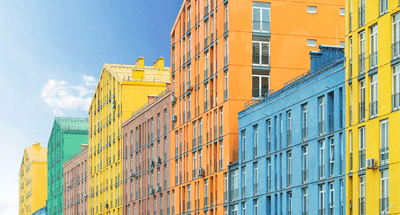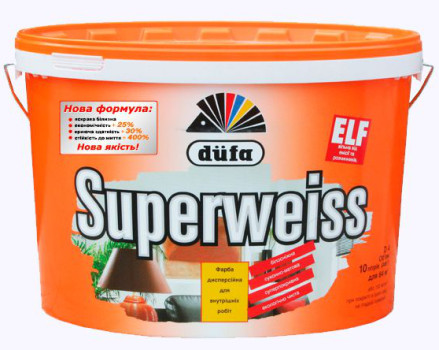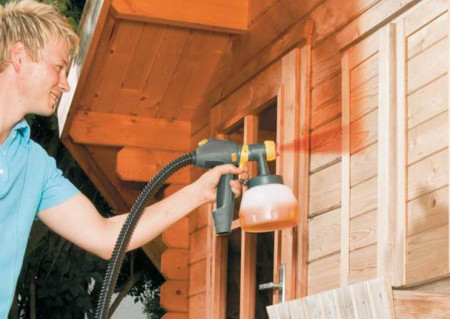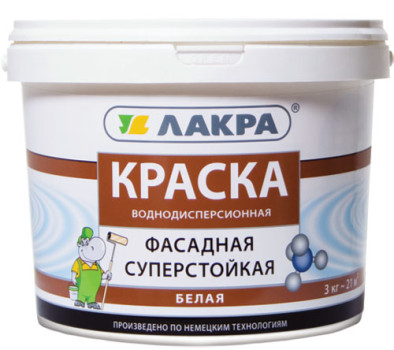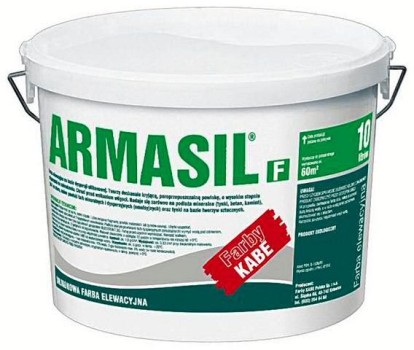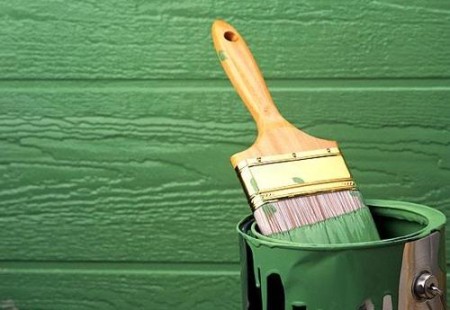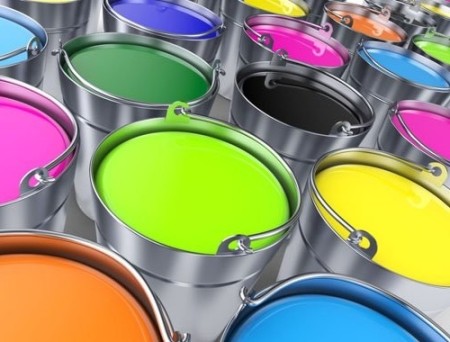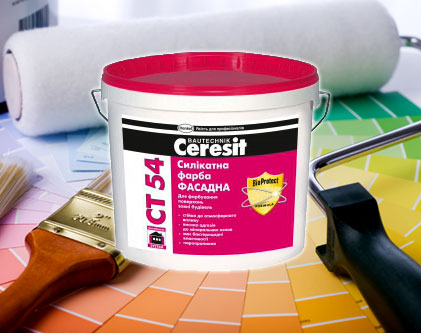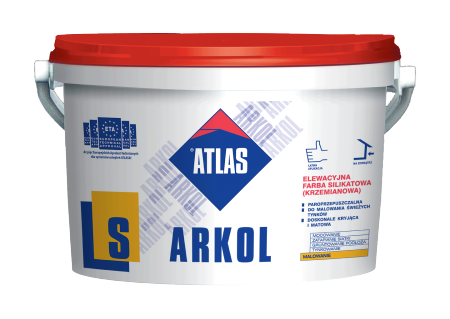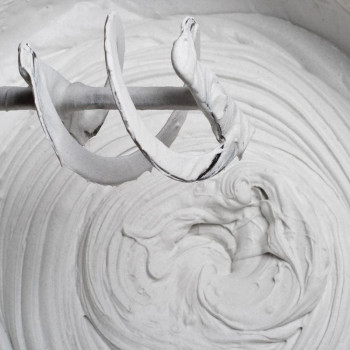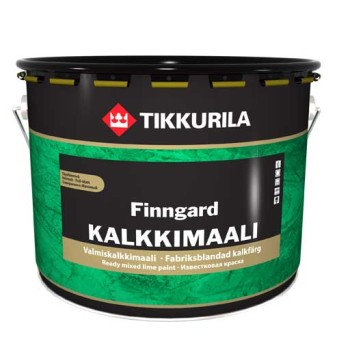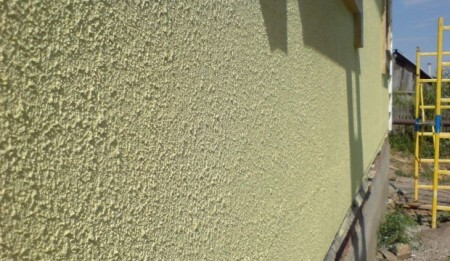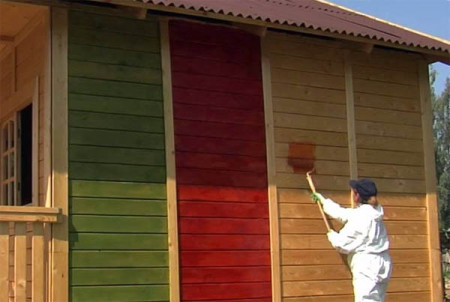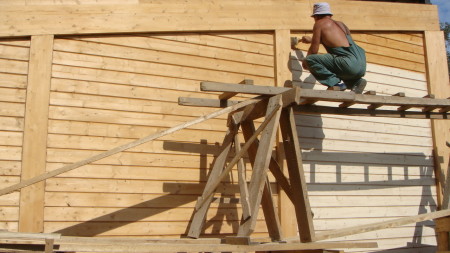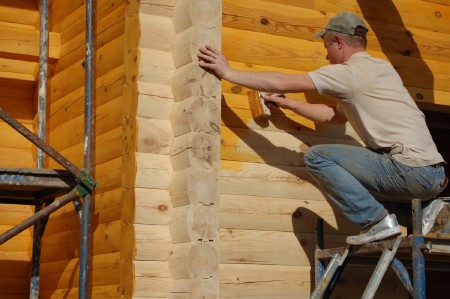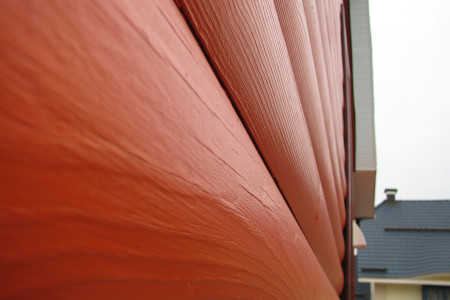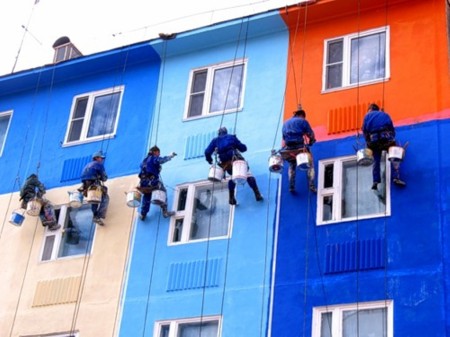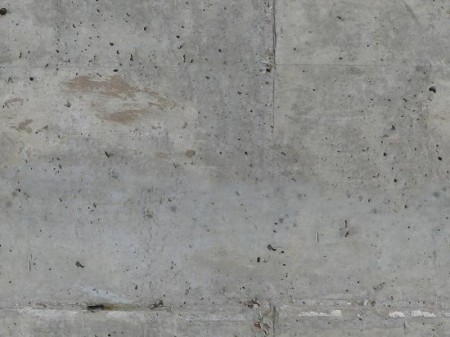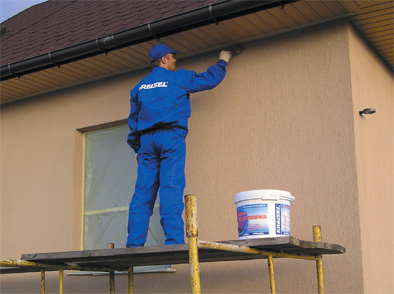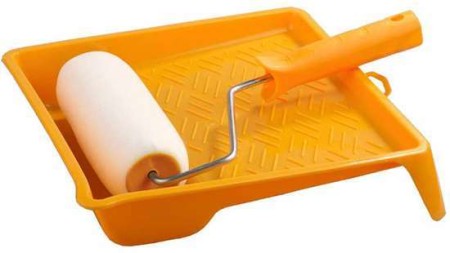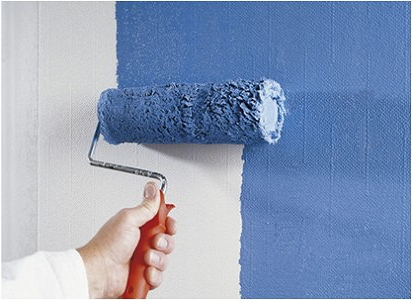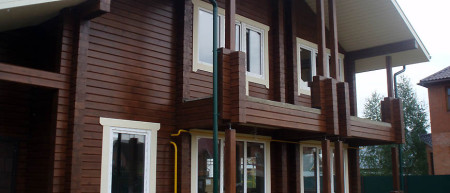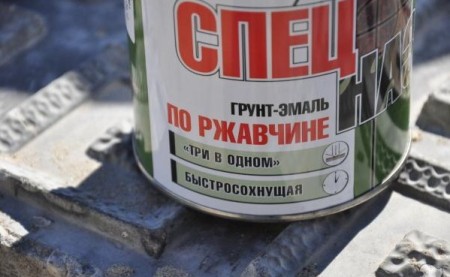The external design of your home requires no less serious approach than the internal one. The facade of the house is his face, and it should not only differ from others, but also be attractive, and, if one may say so, benevolent. For the design of the facade, you can choose any paint suitable for a particular type of coating and for every taste. Facade paints are distinguished by composition, properties and purpose. Below we will look at the types of facade paints, their properties, and also give advice - how and what paint is better to paint this or that surface.
Content
General concept of facade paints, their varieties
Vinyl paints.
Recently, several have lost their popularity because developers prefer acrylic paints, which have a good vapor permeability, contain a small amount of water and are resistant to the effects of various chemicals. In addition, the acrylic coating is durable, and holds the color for a long time.
Reactive facade paints.
In the composition - resin and hardener. This paint for outdoor work has a short shelf life, and it must be applied very quickly. Therefore, as a rule, it is used for finishing small areas and it is applied very quickly.
Alkyd paints.
They contain in their composition vegetable acid, anhydride and alcohol. Alkyd paints are very elastic. But, the higher the elasticity of the paint, the longer it will dry.
Acrylic paints.
Very well protect the surface of the facade from the effects of atmospheric factors. In the modern market of finishing materials, acrylic paints are presented in the widest range of colors. Acrylic paint is very suitable for painting concrete surfaces. However, it does not have sufficient vapor permeability, which, undoubtedly, is a significant drawback. There are several types of acrylic paints: those containing water, latex, or an organic solvent.
Silicone paints.
Contain silicate and acrylic. Silicone paints have good water-repellent properties. The vapor permeability of silicone paints is quite low, but at the same time, silicone paint perfectly protects the facade surface from direct sunlight and temperature changes. Resistant to mechanical damage. Silicone paints produce in a wide range of colors.
Oil paints.
Today is not very popular due to the mass of shortcomings. The facade oil paint dries very long. They are inconvenient to apply to the surface. Over time, the colored surface becomes dim and loses its original appearance.
Acrylic-silicone paints.
Combine all the best properties of acrylic and silicone paints. They differ in good water vapor permeability and repel water well. The painted surface well resists mechanical influences, dust and dirt do not adhere to it.
Silicate paints.
Best suited for painting the lime surface. Do not use silicone paints for application on gypsum or organic surfaces. The main linking element of silicate paints is liquid potassium glass. Thanks to this, silicate paints have high vapor permeability.
Polysilicon paints.
They have acrylic resin in their composition. With polysilicon paints it is fairly easy to work, they have high resistance to moisture and good vapor permeability.
Cement paints.
Produced in dry form. Water or special formulations are used as a solvent. Cement paint has a good vapor permeability, but extremely unstable to moisture.
Lime paints.
Are sold as a paste. Dilute with water and dye. They absorb water well, practically do not protect the facade from dirt and moisture. But, at the same time, they have good antiseptic properties, prevent the appearance of mold and fungi, and have good vapor permeability.
Textured paints.
With their help, you can give the facade a unique attractive look. Such paints form a fairly thick polymer film on the surface, strong and resistant to mechanical damage. Perhaps, this is the best paint for outdoor works, but it is quite expensive.
What and how best to paint the facade of wood?
Before proceeding directly to painting, it is necessary to conduct a number of preparatory works. Wood must be carefully processed and prepared, as it is a "living", breathable material, unlike concrete, brick or plaster. Preparatory work allows to achieve good adhesion of the paint to the wood surface and significantly extend its service life.
Remove dust and dirt from the surface to be painted. The easiest way to do this is with a conventional garden sprayer and brush. Water absorbs dust well and removes dirt, so using a sprayer will make it much more efficient to clean the surface than with a brush alone.
If the surface is moldy or light blue, they must be removed with a special tool. Resin (on products from coniferous species) is removed with a metal spatula. The place cleared from resin is opened with a special varnish for knots (so the painted surface will be more equal). If on the surface there are metal parts, for example, hats of nails of screws, some other details or decor elements that are not covered with paint, they must be cleaned and covered with a metal primer.
After the completion of all the above works, you need to give the wood some time to "relax", about a week. In this case, prepared for painting the surface should be covered with a plastic film. If the weather is good, warm, then it is not necessary.
If the tree is wet, and dry it in the near future is not possible, apply a primer antiseptic mixed with the color on the surface and leave until you have the opportunity to dry the tree properly.
What kind of wood paint for outdoor works fits best?
For this purpose, there are several types of coatings:
- Antiseptics.
- Acrylate paints.
- Oil paints.
Antiseptics penetrate deeply into the woods at 4-7 mm., Creating a reliable protection of the surface from atmospheric factors, rot and mold. You can use a coating or a dressing antiseptic. Absorption antiseptics are completely transparent, preserve and emphasize the texture and relief of the tree.
Acrylate paints are very resistant to moisture and transfer temperatures. They are able to maintain their original appearance for quite some time. Acrylate paints allow the wood to "breathe" without disturbing the microclimate inside the building. Due to the presence of acrylate in the paint, the coating is elastic, it does not show cracks in the shrinkage and deformation of the wooden house.
Oil paints also have good resistance to the effects of atmospheric factors, are well absorbed, but very slowly dry (more than a day).
In addition, the surface, painted with oil paint, dims over time. Although, this is not too noticeable, especially if you use light shades.
Painting of concrete facade
It should be noted immediately that only silicate, acrylic, and silicone paints with sufficient vapor permeability are suitable for painting the concrete facade.
Before the beginning of the painting work, the concrete surface should be properly prepared.
To do this you need:
Check the foundation for durability. To do this, it is sufficient to hold the surface with a metal spatula. If at the same time the fragments fall off or break away from the concrete, it will be necessary to finish the facade for painting. All areas of the surface, the integrity of which is broken, carefully cleaned, treated with a special hydrophobic solution and shpaklyuyutsya.
Priming of the facade. After the putty has completely dried, a primer coat is applied. This is necessary to ensure a good adhesion of the paint to the concrete surface. Apply primer in accordance with the attached instructions.
Important point: you can not use linseed oil as a primer on an acrylic base. This has a negative effect on the adhesion of the paint to the surface, which will lead to rapid cracking of the paint layer.
If it is necessary to paint a highly absorbent surface: fresh plaster, brick, limestone, then there is no additional layer of primer, as these materials intensively draw water out of the paint, which interferes with the formation of a high-quality protective layer.
we paint the concrete facade
The very work on painting the concrete facade is of no particular complexity. If the task is to paint a large area, it will be best to use special equipment designed for painting facades. And if the area is not very large, it is enough to arm yourself with a roller and stepladder or small building scaffolding.
Tip: if it is necessary to paint the facade of a building that is more than one storey high, it is not recommended to do it yourself, it is better to resort to the services of professionals.
The procedure for painting works is fairly simple. Paint for concrete for outdoor work is poured into a special tray.
Muck the roller into the paint, gently remove the excess, apply the paint in one direction. Each next "path" is applied in such a way that it overlaps the previous one by about 4-5 centimeters.
Painting should start from the corners, as they need to be painted very carefully.
On the base plinth paint should be applied in the last turn, since its excess constantly flow down. Approximately one hour after the application of the first coat of paint, a second finish coat can be applied. Do this with undiluted paint. It is desirable to work on painting the concrete façade in dry and warm weather, so that the paint is well dried. All the ledges, columns, window sills and other elements of the facade can be painted in a different color, which will "refresh" the facade.
As you can see from the above, painting the concrete facade of the building does not represent something complicated, and can be done by oneself, in contrast to finishing the facade with other materials. It is only necessary to study the theory carefully before starting the work: how to choose the right paint, how and what to plant, etc. And then everything will turn out.
Painting of metal parts of the facade
The choice of paints for metal for outdoor works, which can be covered with metal elements of facades, is quite wide. In most cases, paints are used based on organic solvents - oil, alkyd, polyvinyl, etc. If it is necessary to paint the galvanized or aluminum surface, it is recommended to use dispersion paints. They can differ in drying time, have different colors and shades. For different types of dispersion paints, different solvents are used.
More recently, metal surfaces have been painted in several stages: first, surface treatment with a rust converter, then a primer was applied, then paint. Today, there are universal primers on the market, which are also converters of rust.
There are universal paints that neutralize rust. They can be applied directly to the untreated surface. Quite popular decorating paints that have anti-corrosion properties, which can be applied to the surface, slightly affected by rust. If you need to paint a small detail of the facade, it is very convenient to use paint in spray cans.
Before working, the paint must be mixed thoroughly. If it contains clots, or the surface is covered with a film, it means that the expiration date has expired or the ink has not been stored correctly. To stir quality paint, it is usually enough just to shake the jar. But it is better, of course, to stir it with a stick or special mixer.
If you want to get a new color, you can mix different colors. In this case, you can not mix different types of paint and paint, already diluted with a solvent.
We hope that the above material will help not only answer the question: how to choose the paint for outdoor works, but also will benefit those who decided to do their own painting for the first time.


